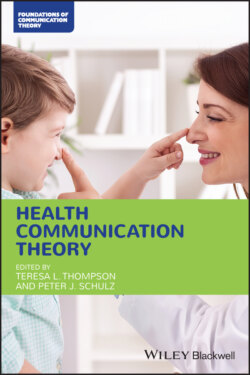Читать книгу Health Communication Theory - Группа авторов - Страница 30
Sensation Seeking
ОглавлениеSensation seeking refers to people’s need to satisfy their desire for stimulating, exciting, and novel experiences (Zuckerman 1994). Individuals high in sensation seeking enjoy such experiences as riding extreme thrill rides (e.g. sky diving), and as a result, experience what they describe as a “rush” (Bardo, Donohew, and Harrington 1996). Since sensation seekers enjoy novel and intense experiences, they seek gratification in taking financial, legal, physical, and social risks (Zuckerman 1979, 1994). With relation to health behaviors, sensation seekers engage in risky behaviors such as drug use (Donohew 1990) and unsafe sexual activity (Donohew et al. 2000). Given their need and desire to perform risky behaviors, not surprisingly, sensation seeking has been recognized by health communication researchers and practitioners as an effective audience segmentation variable (e.g. Palmgreen et al. 2001).
The activation model of information exposure provides the theoretical framework for much of sensation seeking research (Donohew, Lorch, and Palmgreen 1998; Donohew, Palmgreen, and Duncan 1980), which stipulates that an individual has an ideal level of arousal at which they feel optimal comfort and that individuals seek to achieve and maintain this level of arousal when they are in situations of information exposure. Stephenson (2002) argued that individuals will continue paying attention to a stimulus that meets their arousal threshold. Otherwise, they look for another source of excitement to fulfill such a need. Therefore, the activation model of information exposure provides an explanation of how low and high sensation seekers react differently to health campaign messages, such that messages with structural and content features that are adequately arousing will appeal more to sensation seekers, whereas non‐sensation seekers may attend more to messages that cater more to their optimal level of arousal. Donohew, Lorch, and Palmgreen (1991) assert that “only when the message satisfies a desired level of arousal that individuals are likely to stay with it” (p. 207). It follows that a marketing message that appeals to non‐sensation seekers may not be adequately stimulating for sensation seekers to maintain attention to it. Conversely, messages that sensation seekers find stimulating may be perceived as too arousing by non‐sensation seekers. Hence, perceived message sensation is a determinant of the attention to and processing of messages.
Sensation seeking has also been studied in the contexts of HIV/AIDS prevention messages (Hull and Hong 2016), risky driving behaviors (Lemarié, Bellavance, and Chebat 2019; Zhang, Qu, Tao, and Xue 2019), student procrastination (Chen 2019), food supplement use (Hatch et al. 2019), and body piercing (Hong and Lee 2017). Among these studies, previous research investigated the role of sensation seeking on message processing with some finding no difference between low and high sensation seekers (Stephenson and Palmgreen 2001) and others reporting an interaction between sensation seeking and message processing and attitude (Stephenson 2002). An explanation for the mixed findings lies in topic differences. Stephenson (2002) argued that message topics which normally have more severe consequences tend to be of a higher sensation value. Messages considered high in sensation value are characterized as being dramatic, emotional, and novel (Palmgreen et al. 2001). On the other hand, messages with less severe consequences may be of a moderate sensation value, which makes it harder to detect message processing differences between low and high sensation seekers. Much like the previous individual difference variables introduced in this chapter, we see sensation seeking as an important segmentation variable to consider when advocating the health consequences associated with performing a risky behaviors.
